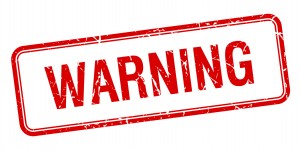Product Liability: Understanding Improper Warnings
 Our lives are filled with different products that we use frequently throughout the day, from our homes to our cars and just about everything in between. Each of those products can be filled with a variety of other parts or products that ensure that everything runs properly. Individually and as a whole, these products must meet certain safety standards in order to be used.
Our lives are filled with different products that we use frequently throughout the day, from our homes to our cars and just about everything in between. Each of those products can be filled with a variety of other parts or products that ensure that everything runs properly. Individually and as a whole, these products must meet certain safety standards in order to be used.
Often times, a variety of defects can cause these products to be unsafe. These defects can occur in the product’s design or in the manufacturing process. However, injury can also come as a result of improper warning labels that do not fully notify the user of the dangers of using the product or do not effectively indicate the manner in which the product can be safely used. When an injury results from an improper warning, an avenue can open for the victim of the injury to collect damages from that injury.
What are Proper Warning Requirements?
Federal law requires manufacturers of goods to make dangerous components or uses known to the public. For instance, a household cleaning product that contains hazardous chemicals must notify the public of the presence of hazardous chemicals and the danger of ingesting them or getting them onto skin or into eyes. This is a common example of a product warning label that can be found in just about every household in Georgia.
However, some other products available to consumers that would otherwise be found to be effective can be defective when their warning labels to do provide adequate instructions to the public for the product’s proper use or the potential for possible injury from use of the product in an improper way. This product defectiveness can come in one of three ways:
- Lack of any warning at all;
- Lack of an adequate warning indicating potential hazards; and
- Lack of proper usage instructions.
The first requirement is fairly straightforward. If a product is or can be dangerous, the product must say so. For instance, if a product requires the use of electricity it is likely that such product must warn of the dangers of exposure of electricity to water.
However, just having that warning may not be enough. The warning must also communicate the danger to the user effectively, and must demonstrate the possible scope of the danger present to a reasonably cautious person that is using the product in its intended use. Such intended use must also be specified. This is one of the reasons that many warning labels have written safety instructions or precautions that are accompanied by pictures demonstrating the result of using the product improperly.
What Can You Do if You are Injured as the Result of an Improper Warning Label?
If a product causes injury or death because of improper warning, the victim can collect damages based on the product’s defectiveness due to its lack of proper warning. You will need to contact an attorney that has experience handling personal injuries that have occurred as the result of products that are defective because of improper warning labels. Cash, Krugler, & Fredericks LLC has experience working with accidents resulting from defective and dangerous products. Contact us today to schedule a free consultation to discuss the circumstances on your injury and see what options may be available to you to recover for such injuries.

